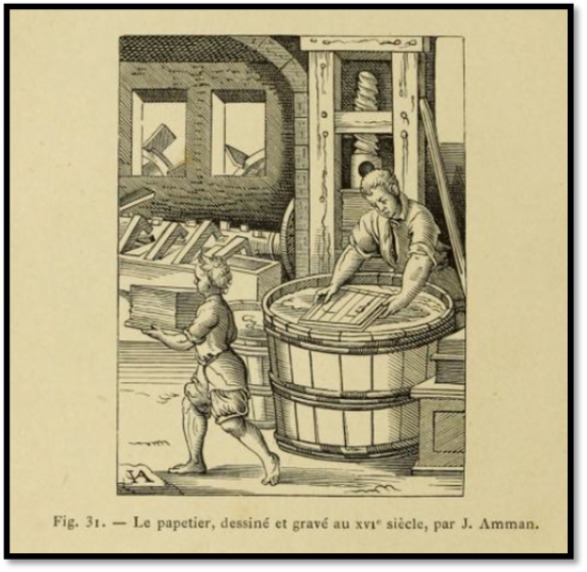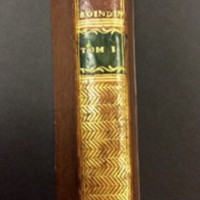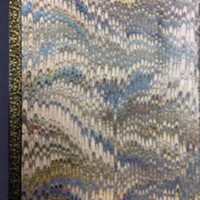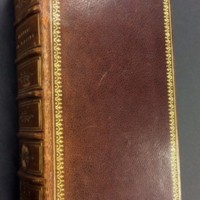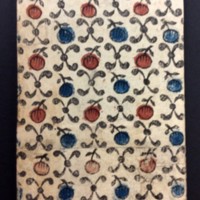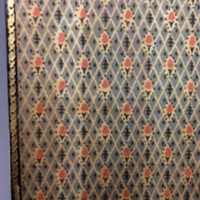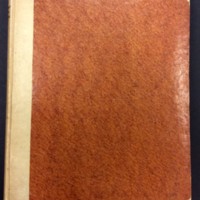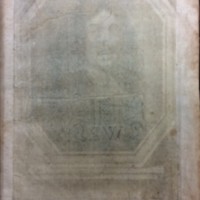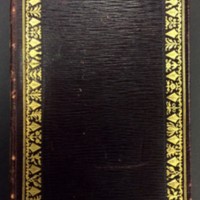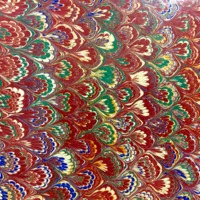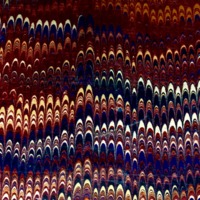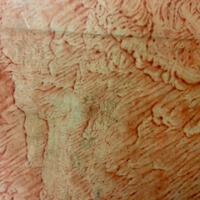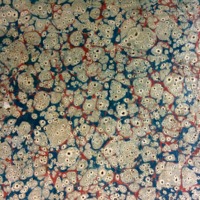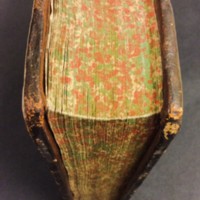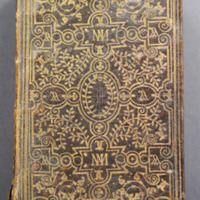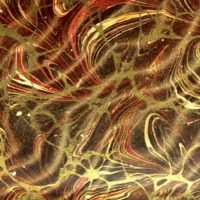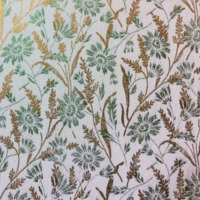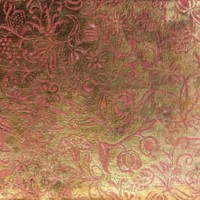Papermakers and marblers
Paper is one of the central elements in the production of the book. Following the use of animal skins such as parchment, paper manufactured with vegetable fibres is one of the most significant inventions in the history of the book. The early Egyptians fashioned papyrus made from the plant of the same name. From the Far East, alternative crops such as cotton and linen were used to produce materials on which to record writing. The recipe of the paper was a long kept secret and it wouldn’t be until the 13th century, in Italy, where we would see the first paper, as we know paper today, produced. Linen would form the basic ingredient for paper in Europe until the 19th century, when paper was produced by means of the newly discovered technique using wood fibre and various chemicals.
Papermaking entailed several steps. One first had to recover linen fibres, mostly from used clothing, allow them to rot and then grind this putrefied mixture to form a thin paste. This paste is then introduced into a mould of fine mesh fashioned in such a way that when the mould is immersed in the linen mixture, most of the water will run off, leaving only a thin layer of fibres on the surface. This thin layer of “paper” is turned over onto a piece of felt, and the operation is resumed to form a large sandwich of fibre felt layers. Using a press, the water is then removed. During drying, the fibres coalesce together to form paper sheets. These sheets are then carefully removed and left to dry, awaiting the bonding process. That is to say, they await the addition of an adhesive material that will allow for the paper to be less brittle and less absorbent, permitting them to be printed or written upon without the ink dispersing or running off them.
Paper, was, of course, the material on which a book’s text would be printed. However, paper was also used as an alternative to leather and parchment binding materials in the 16th and 17th century. Cartonnage, made of pulp paper, was generally used as a protective, temporary binding for a textblock while it was in transit and/or when it was sitting at a bookseller’s shop, awaiting its final binding. Paper would also serve a protective function in the binding process. At the time of attaching the leather binding, which was often made of dyed leather, to the textblock, the binder would also add pages of paper between the inner binding and the text. This was done in order to prevent colour of the leather from “bleeding” into the text book. Occasionally, we discover that old pages of handwritten text or printers’ waste have been used for this purpose ; sheets of white paper could also be used. However, in the 18th century, various decorative techniques stemming from the Orient were introduced into papermaking practices in Europe.
Marble(d) paper is one such example of a papermaking practice adopted from Asia and introduced into European paper production. The alternative French term for marbled paper, “papier à la cuve”, stems from the production process of this type of paper: in order to produce marbled papers of various designs, the ink must be deposited on the surface of the water in a vat (“cuve”), where the ink floats. In Japan, this technique is called “Suminigashi” meaning "floating ink". The Japanese technique was modified in Europe, where often a thickening agent was added to the water to ensure that the inks would more easily remain on the surface of the water. Once the inks were deposited onto the water, the marbler used various tools to create intricate patterns. The creation of marbled papers was regulated and each pattern depended on a particular technique, ensuring that patterns would be identical from one sheet to the next. Examples of named patterns are: “shell”, “comb”, “peacock”, “oak leaf”, and so on.
Hand blockprinted paper (“papier dominoté” in French) is yet another technique used to create decorative papers. Sheets of paper are printed upon with wooden blocks engraved in relief in repetitive pattern of various shapes: geometric forms, flowers, birds, and so on. When ink is applied to these wooden blocks, the designs will be printed in black on the white background of the paper. These designs and shapes are then coloured by hand or by stencil. This technique was used mainly in the 18th century, eventually disappearing in the early 19th century with the emergence of new printing techniques.
Paste paper (not to be confused with pastedowns or pasteboards) is yet another paper decoration technique that generates pattern by a relatively simple process. An adhesive mixture of starch and colour pigments is deposited onto a sheet of paper, and the desired pattern must be created before the glue dries. A pattern can be generated using a number of techniques. Colour can be brushed on with a stiff brush; it can be sprayed or flicked onto the page in droplets (a style known as “jaspé” in French); it can be “pulled”, where two pieces of paper are coated in the glue and colour mixture, superimposed and then pulled apart, creating a random but regular pattern; “granite”, where extra colour is applied by means of a bush to simulate the look of granite; and finally, colour can be applied to the sheet and then drawn across the page, either with tools or fingers, recalling the finger-painting exercises of our childhood.
Finally, gold-embossed paper is a German technique of the late 17th century. Patterns are first engraved on a brass plate. During the printing process, a thin layer of copper or gold is added to the plate, allowing the designs to be impressed onto the paper. While most papers used were white, some papermakers used papers of different colours, with the aim of imitating rich fabrics like brocade.

